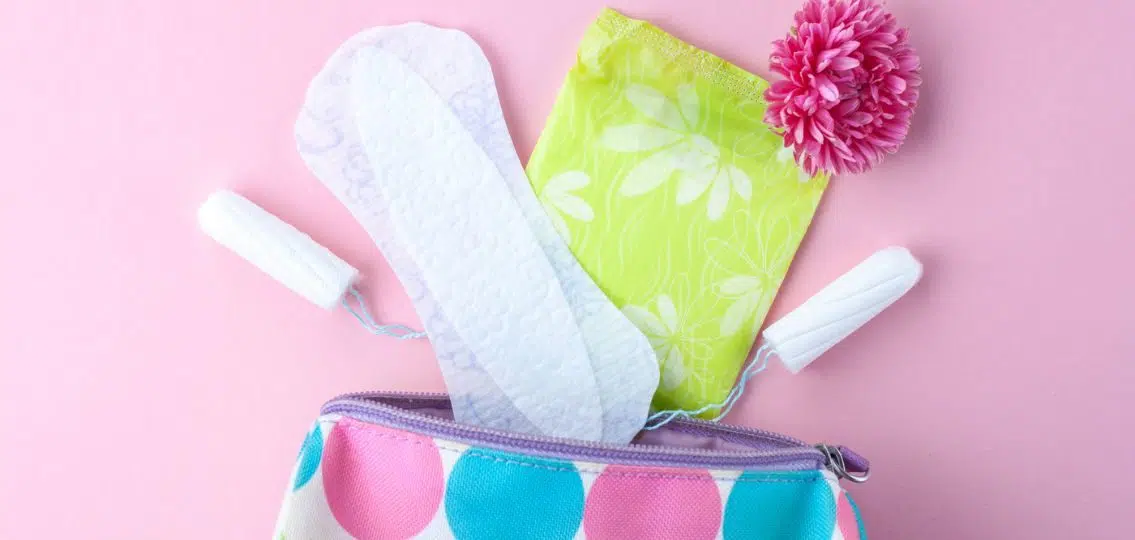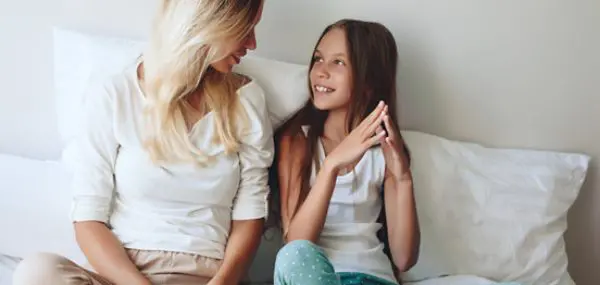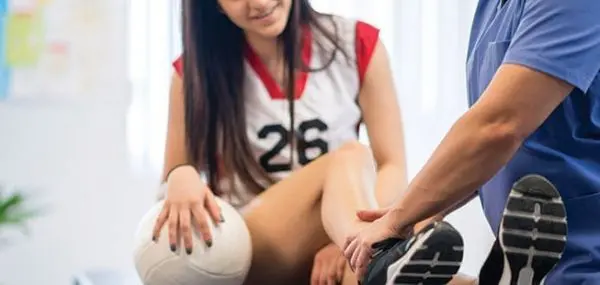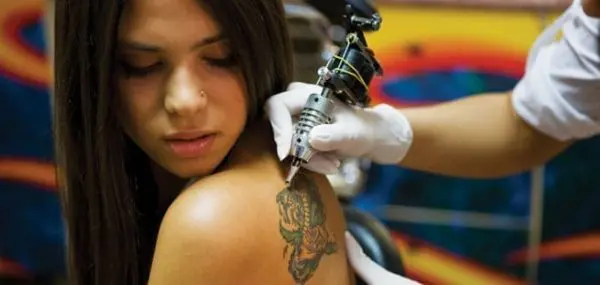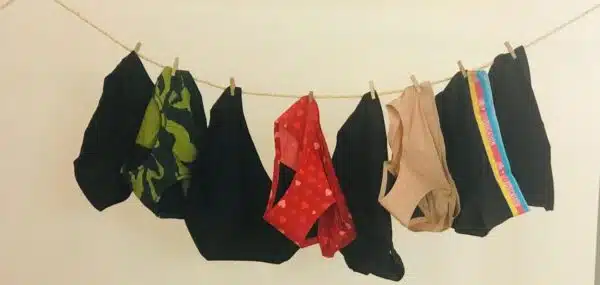I don’t remember my first period. I know it wasn’t as traumatic as the stereotypical nightmare where everyone points at me and laughs as a red splotch spreads across my white jeans. I do, however, remember the feeling of being at my locker and realizing, (with a roller-coaster-esque stomach drop) that my period was starting.
The rate at which the following questions raced through my mind cannot be clocked: Did I have a pad? If I didn’t, who could I ask for one? How would I explain being tardy? Could I get to the restroom? Was I wearing light colors? Was it possible to literally die of embarrassment if blood leaked through my shorts?
Is your tween nervous about getting their period for the first time?
Like many others, I knew a bit about my female body, thanks to the book, “How Our Bodies Change” and the mandatory health class in 6th grade where everyone did their best to tune out everything the teacher said. Still, I can’t help but wish my mom had stuffed my backpack with a first period kit. Why? Because even with that basic knowledge, I found actually dealing with my first periods embarrassing — and worse, because they were sporadic, they sometimes caught me off guard.
What are first period kits?
The idea behind these kits is so intuitive, it makes me want to kick myself that I didn’t invent them first. For tweens, a huge fear surrounding their first period is not knowing where they’ll be when they have it, and that they won’t have supplies on hand.
First period kits aim to lessen the fear of a period striking when your child is unprepared. The kits come in cute, nondescript totes that fit inside a backpack (or even a medium-sized purse), and they’re filled with first period necessities, so no matter where your menstruating child is, they have everything they need.
Where can I get a first period kit?
For the DIY crew among us, (or those who just want to make a period kit more personalized) first menstrual kits are easy and inexpensive to throw together. What do you put in a period kit? Grab (or make) a cute tote and fill it with the following items:
- Several Pads
- Tampons
- A change of underwear
- Sanitary wipes
- Plastic ziplock bag (to store soiled underwear)
- Hand Sanitizer
- A fun chocolate treat
- And, potentially, some medicine (depending on the rules at your child’s school)
For the “crunchier” families, I recommend Lola’s kit. Their tampons and pads are made with organic cotton; plus, they’re fragrance-free. (Fragrance can cause irritation, itching, infection, or an allergic reaction — which are experiences we want to avoid in our sensitive private bits).
If your child loves “all the things,” grab this super kit from Ruby Love. It comes with a face mask, chapstick, warming gel pad, compact mirror, a stress ball, and more.
Rael’s First Period Kit is another great Tween option. This one includes a Self Care Period Guide in partnership with #HappyPeriod.
When should I buy my tween their first period kit?
Unfortunately, no one can tell your daughter (or child assigned female at birth) exactly when they will get their first period. Indications that a first period is coming — like, budding breasts and the start of pubic hair — can start years before their first menstrual cycle. In those in-between years, we can lay some important groundwork preparing our kids.
First, don’t shy away from having them with you (or with your partner) when shopping for menstruation pads and tampons. It’s important to normalize this necessary function of our bodies. Each time you purchase those products, take time to explain that most people with a uterus have their period every month, and it’s very likely that someday their bodies will produce periods, too. Not a ton of extra details are needed when kids are young, just an open door for later discussions.
Second, when you notice your child is starting to develop breasts and/or pubic hair, consider setting aside one-on-one time to explain that their period is on the horizon, and then gift them with a beautifully wrapped (in red, if you’re going for thematic) first period kit.
After gifting the first period kit, explain what each item is and show how to properly use them (include proper disposal). If a show-and-tell feels daunting, it is well worth setting up an appointment with your pediatrician or gynecologist so they can have this discussion with your tween before their period starts. And, of course, remind your tween to keep their first period kit where they can find it when the need arises. Backpack, locker, purse — perhaps one in each location.
A final word on tweens and periods.
I know this can be murky territory for some, so here are a few final tips for first-time parents of tweens, brought to you by OB-GYNs everywhere:
🩸Most girls and tweens assigned female at birth will start their period between 10-12 years old. Contact your GYN/pediatrician if your child hasn’t started their period by age 15.
🩸Destigmatizing periods goes a long way toward reducing embarrassment surrounding a natural (and important!) function of our bodies. Allow your child to see you pulling out pads and tampons and menstrual cups, and talk to them about the natural rhythms of our bodies each month.
🩸And, finally — what I love most about first period kits, is that they mark and celebrate an important rite of passage in a way that feels practical and engages further discussion. This is definitely a season of change, and it can be hard to walk the line between calling attention to an area your tween might feel uncomfortable about, and letting them know they can turn to you for support and for answers to whatever questions they have. I think a first period kit does a great job striking that balance.
Congrats, your tween is growing up! How exciting it is that we get to partner with you as they mature and learn.
